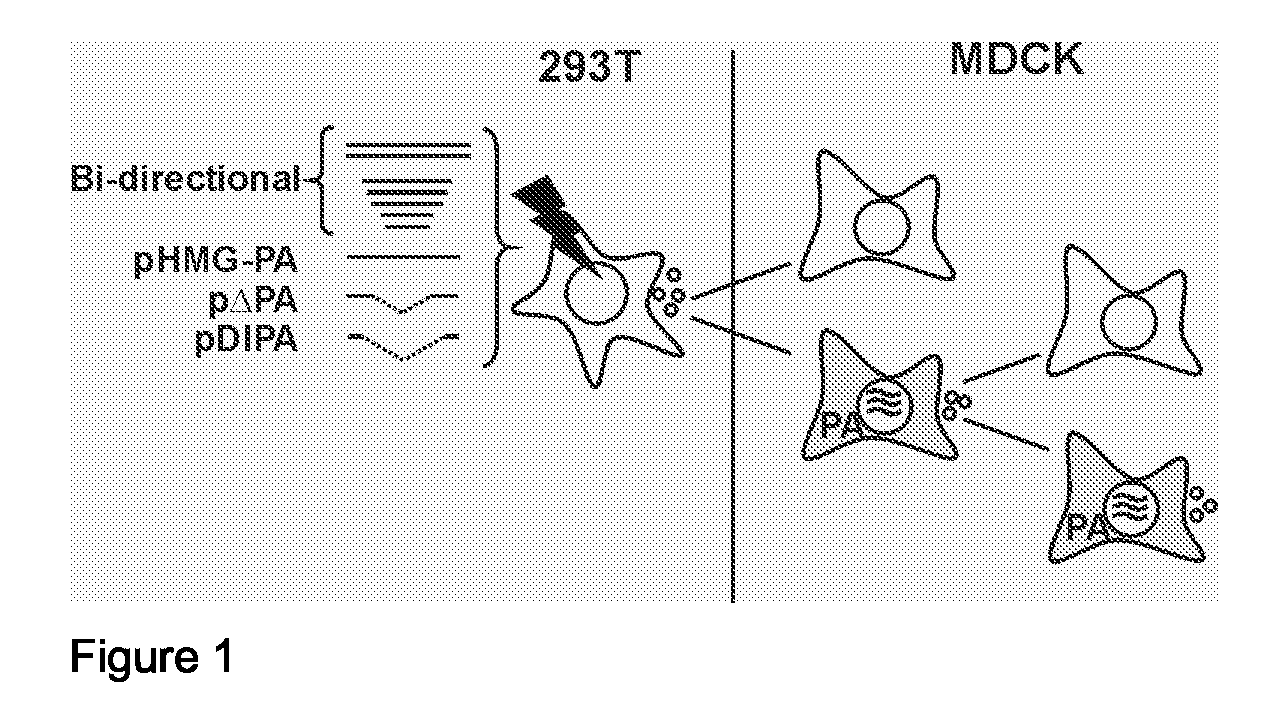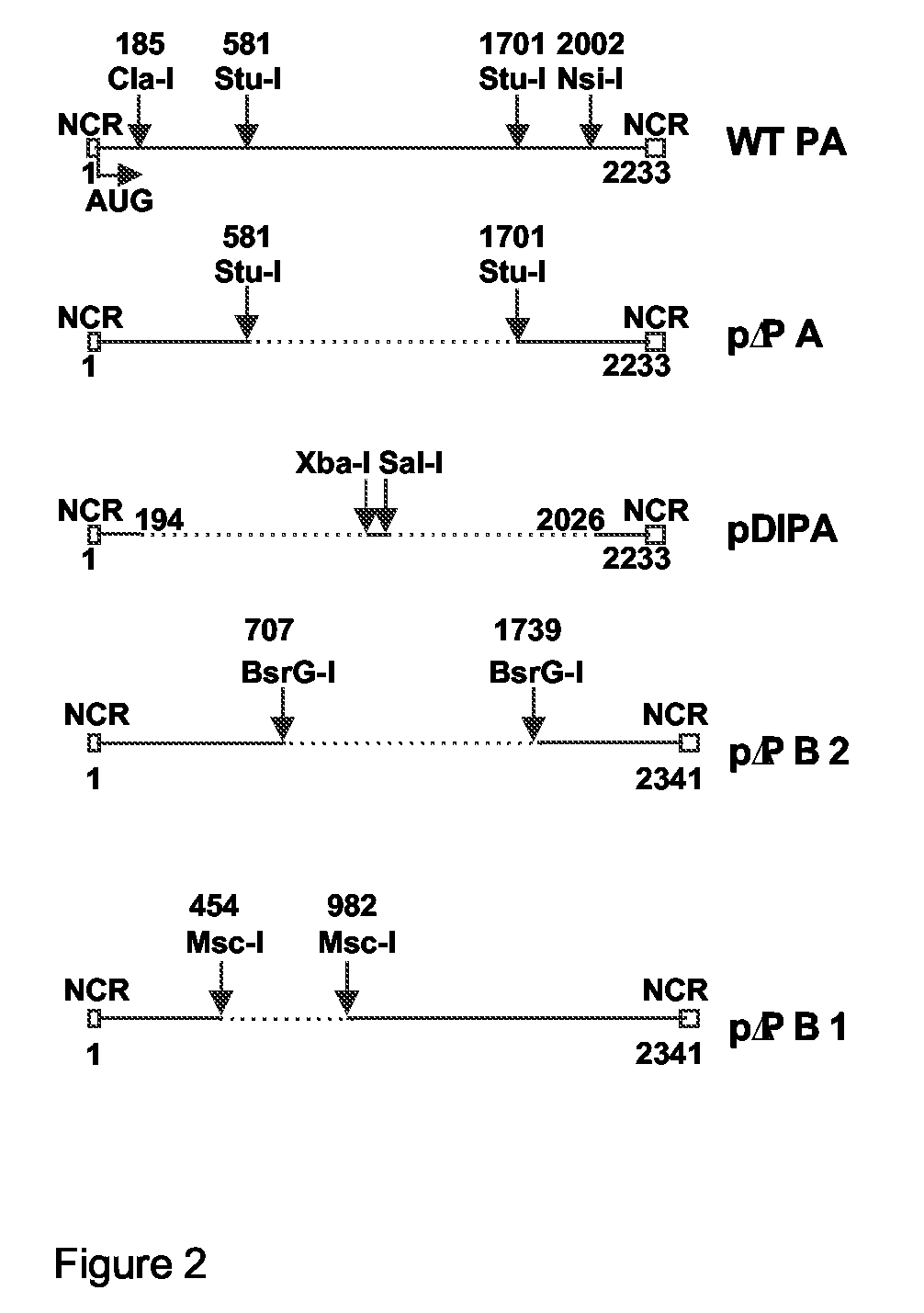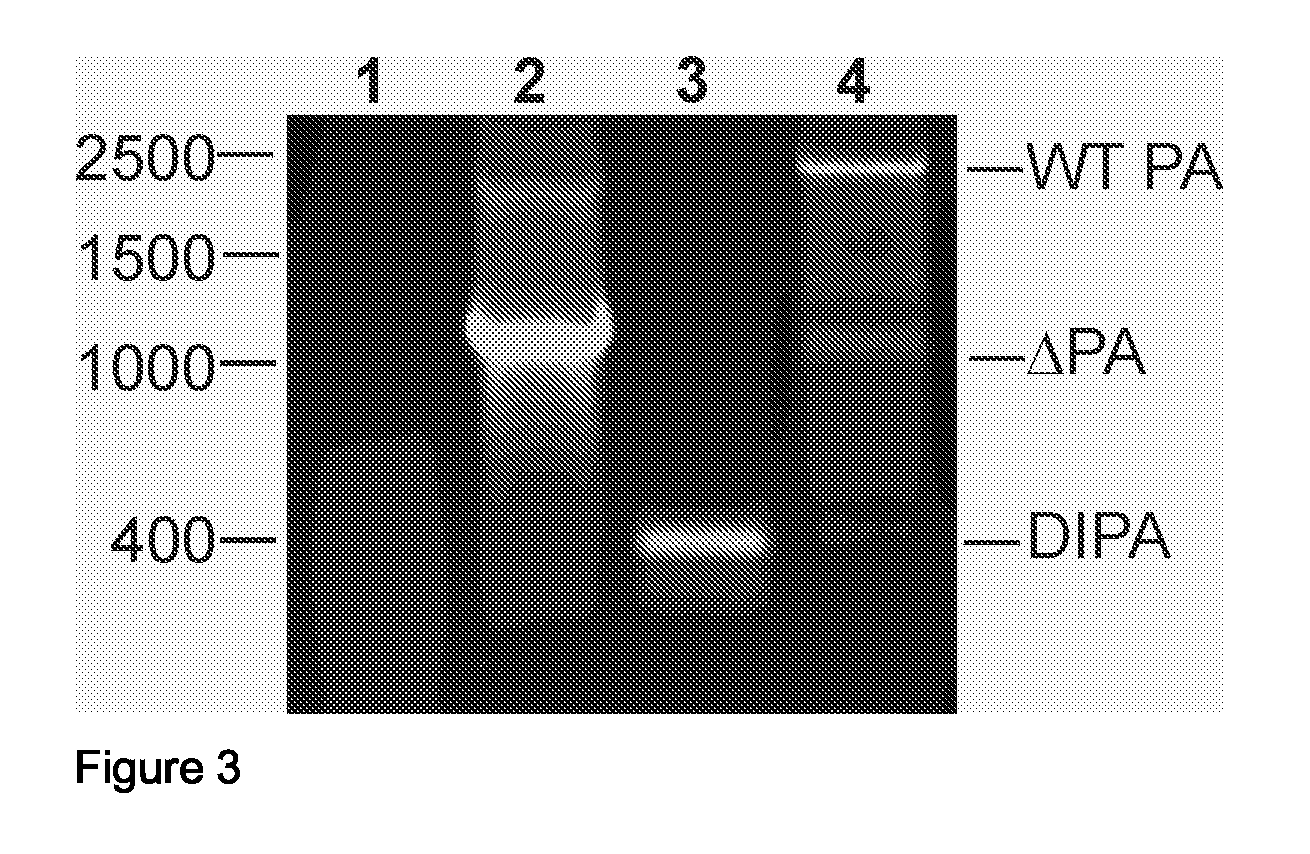Defective Influenza Virus Particles
a technology of influenza virus and defect, applied in the field of flu vaccine and virus, can solve the problems of undetectable production of fully infectious virus, natural system of trans-complementation is not useful to produce defined conditionally defective influenza virus particles, and reduce the possibility of large quantities of such particles, so as to reduce the risk of reversion and reduce the risk of vaccine virus spread
- Summary
- Abstract
- Description
- Claims
- Application Information
AI Technical Summary
Benefits of technology
Problems solved by technology
Method used
Image
Examples
example 1
Generation of Defective Influenza A Virus Particles from Recombinant DNA
[0043]Influenza A virus is a negative sense, segmented virus. The genome consists of eight gene segments. All eight functional gene segments are required to produce infectious virus, i.e. replicative virus that is capable of unlimited or at least several rounds of replication in cells commonly considered suitable for influenza virus replication. The packaging process of the gene segments of influenza A virus, either through a random or a specific mechanism, has been under debate for many years. Pieces of evidence for both options have been described. Evidence for random packaging is that aggregated virus particles have a higher infectivity than nonaggregated virus particles (6) and that when a cell culture is infected at a low moi, some infected cells lack the expression of one segment (8), both suggesting that there are virions that do not contain the entire influenza virus genome. Further evidence of random pa...
example 2
Vaccination with Defective Recombinant Virus
[0053]A conditionally defective recombinant virus lacking a functional PA, PB1 or PB2 gene is produced as described herein based on a high-throughput virus backbone (e.g. derived from the vaccine strain A / PR / 8 / 34) with the HA and NA genes of a relevant epidemic virus (e.g. A / Moscow / 10 / 99). The conditionally defective virus is produced by transfection, whereby polymerase protein expression is achieved through trans-complementation. The virus is subsequently amplified in the appropriate cellular substrate such as MDCK cells or Vero cells stably expressing the relevant polymerase. The viral supernatant is cleared by centrifugation for 10 min. at 1000×g. The virus is concentrated and purified by ultracentrifugation in 20-60% sucrose gradients, pelleted, and resuspended in phosphate-buffered saline (PBS). Purity and quantity of the virus preparation are confirmed using 12.5% SDS-polyacrylamide gels stained with coomassie brilliant blue and the ...
PUM
| Property | Measurement | Unit |
|---|---|---|
| Volume | aaaaa | aaaaa |
| Volume | aaaaa | aaaaa |
| Angle | aaaaa | aaaaa |
Abstract
Description
Claims
Application Information
 Login to View More
Login to View More - R&D
- Intellectual Property
- Life Sciences
- Materials
- Tech Scout
- Unparalleled Data Quality
- Higher Quality Content
- 60% Fewer Hallucinations
Browse by: Latest US Patents, China's latest patents, Technical Efficacy Thesaurus, Application Domain, Technology Topic, Popular Technical Reports.
© 2025 PatSnap. All rights reserved.Legal|Privacy policy|Modern Slavery Act Transparency Statement|Sitemap|About US| Contact US: help@patsnap.com



